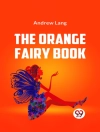D. H. Lawrence’s novels, ‘Sons and Lovers’ and ‘Lady Chatterley’s Lover, ‘ epitomize the author’s exploration of human relationships through a lens deeply intertwined with the complexities of love, sexuality, and societal norms. ‘Sons and Lovers’ provides an intimate portrayal of a young man’s tumultuous relationships with his mother and two lovers, reflecting the psychological depth characteristic of modernist literature. Conversely, ‘Lady Chatterley’s Lover’ boldly confronts the themes of sexual liberation and the constraints of class, employing rich, evocative language that challenges Victorian moralism. Together, these works illustrate Lawrence’s innovative narrative style and his critique of the industrialized society of his time. D. H. Lawrence (1885-1930), born in a mining town in England, profoundly understood the struggles of class and familial ties. His experiences as a working-class individual informed the emotional authenticity in his writing. Lawrence was a controversial figure in his literary career, often provoking outrage with his frank discussions of sexuality and psychological insight, ultimately leading to censorship and legal battles that would underline the thematic explorations of both novels. Readers are invited to immerse themselves in these provocative texts, as they reflect not only the personal struggles of their characters but also the broader societal issues of early 20th-century England. ‘Sons and Lovers’ and ‘Lady Chatterley’s Lover’ present an invaluable opportunity for readers to engage with the intense emotional landscapes and daring ideas that challenge traditional expectations of love and intimacy.
लेखक के बारे में
David Herbert Lawrence, more commonly known as D. H. Lawrence, was a seminal English writer born on September 11, 1885, in Eastwood, Nottinghamshire. His prodigious literary career encapsulated not only novels but also poems, plays, essays, travel books, and letters. Lawrence’s writing is celebrated for its exploration of human psychology, intimate relationships, and the natural world, often highlighting the conflicts between the individual and society, emotion and industrialization. His novel ‘Sons and Lovers’ (1913) is an autobiographical work that delves into the complexities of familial and romantic loyalties, establishing his reputation as a talented and insightful novelist. Meanwhile, ‘Lady Chatterley’s Lover’ (1928) created controversy with its frank treatment of sexuality, resulting in censorship battles that became pivotal in the fight against literary censorship. Lawrence’s contribution to modernism, vivid character portrayals, and the intensity of his emotional prose have secured his place amongst the most influential literary figures of the 20th century. Unfortunately, his career was cut short when he succumbed to tuberculosis at the age of 44, on March 2, 1930, in Vence, France. Despite his relatively short life, D. H. Lawrence’s work continues to intrigue and inspire, leaving an indelible mark on English literature.












